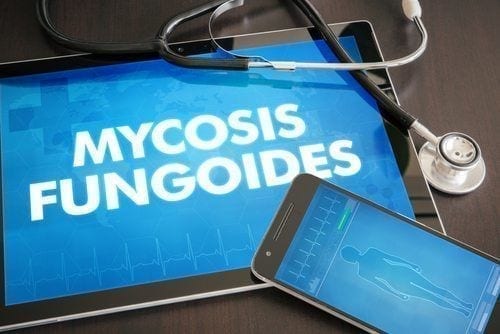
This post discusses Social Security Disability for Mycosis Fungoides. Read on if you or someone you care for is unable to work because of cutaneous T-cell lymphoma.
According to the National Cancer Institute, Mycosis fungoides (or Alibert-Bazin syndrome) is a disease in which lymphocytes (a type of white blood cell) become malignant (cancerous) and affect the skin. Mycosis fungoides is a type of cutaneous T-cell lymphoma (Non-Hodgkin's lymphoma). Mycosis fungoides rashes can go through phases:
- The first stage is called premycotic (usually occurs on parts of body that are not exposed to the sun) and the rash is hard to diagnose as mycosis fungoides;
- The second stage (patch phase) is a eczema like rash;
- The plaque phase includes small red bumps or hardened lesions on skin which may be red;
- Finally, the tumor phase in which tumors form and may become infected. Per the National Institute of Health:
The tumors in mycosis fungoides, which are composed of cancerous T cells, are raised nodules that are thicker and deeper than plaques. They can arise from patches or plaques or occur on their own. Mycosis fungoides was so named because the tumors can resemble mushrooms, a type of fungus. Common locations for tumor development include the upper thighs and groin, breasts, armpits, and the crook of the elbow. Open sores may develop on the tumors, often leading to infection.
Although rare, the cancerous T cells can spread to other organs, including the lymph nodes, spleen, liver, and lungs. Spread to other organs can occur in any stage of mycosis fungoides but is most common in the tumor stage. In addition, affected individuals have an increased risk of developing another lymphoma or other type of cancer.
There is more than one way to be found disabled and eligible for Social Security Disability for Mycosis Fungoides. You can be found disabled based on Listing 13.05 Lymphoma, the Medical Vocational Guidelines (aka The Grids) or by symptoms that erode the occupational base. As I have discussed before the Listings are usually difficult to meet and my clients fair better with the Grids or on the erosion of the occupational base. But for arguments sake, we will discuss all three ways.
Listing 13.05 requires more than one (single mode or multimodal) anticancer treatment regimen within a period of 12 consecutive months. This means that not only do you have to be receiving anti-cancer therapy (i.e. chemotherapy, radiation, immunotherapy or hormone therapy), you must receive two rounds of it within a year. In short, if the Mycosis Fungoides is not disabling you, two rounds of anti-cancer treatment in a year surely will. As usual, the listing is difficult to meet.
The Medical Vocational Guidelines may help someone over the age of 50 who experiences difficulty walking and standing because of the skin lesions/tumors. The Grids, unfortunately, do not offer much help for anyone else. The last way, based on the erosion of the occupational base, is when your symptoms (itching, pain, fatigue, etc.) or medication side effects prevent you from performing routine work duties like attending work or staying on task while there. We recommend that you contact a NC Social Security Disability Lawyer to present your case to the Social Security Administration.
If you need help with your claim for Social Security Disability for Mycosis Fungoides in Raleigh, Cary, Durham or surrounding areas in North Carolina, call The Bishop Law firm today, (919) 615-3095!

